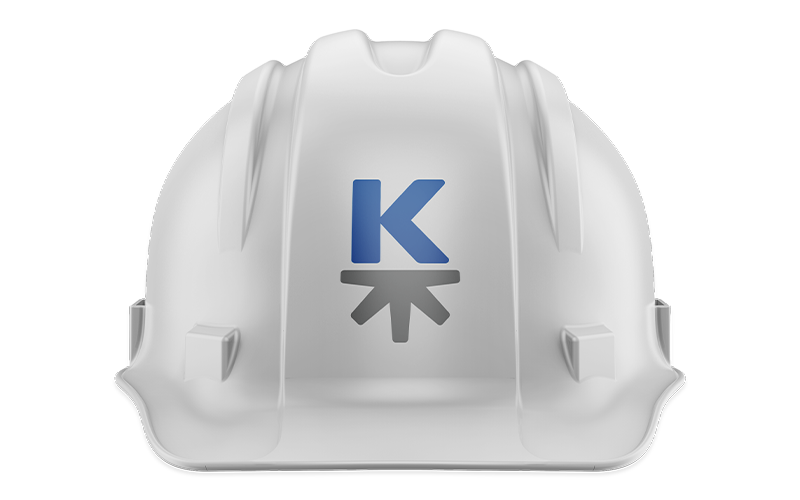Integrating Email Marketing Campaigns

NOTE: This is part four in our 6-part series about Sales and Marketing Workflow Automation. To start at the beginning, click here.
Email marketing is a powerful tool for nurturing leads, engaging customers, and driving sales. However, managing email campaigns manually can be time-consuming and ineffective. By integrating email marketing into your sales and marketing workflow automation, you can create targeted, personalized campaigns that deliver the right message to the right audience at the right time.
Picture this: Your company has a database of leads and customers with varying interests and needs. You want to send targeted email campaigns to each segment, but creating and managing these campaigns manually could take a full-time employee dedicating all of their time to the task.
With an integrated email marketing system, you can automatically segment your audience based on predefined criteria, such as industry, product interest, or purchase history. You can then create targeted email campaigns that are automatically sent to each segment, saving time and ensuring that your messages are relevant and personalized.
Key Benefits of Integrating Email Marketing Into Your Workflow Automation
Integrating email marketing into your sales and marketing workflow automation offers numerous benefits that can significantly enhance your overall marketing performance. By leveraging the power of automation and data integration, you can create targeted, personalized email campaigns that effectively nurture leads, engage customers, and drive conversions. Let's explore some of the key benefits of integrating email marketing into your workflow automation.
1. Automated Segmentation
An integrated email marketing system allows you to automatically segment your audience based on various criteria, such as demographics, behavior, or purchase history. This ensures that each subscriber receives relevant and targeted content, increasing engagement and conversion rates. For example, you can create separate email campaigns for leads who have shown interest in specific products or for customers who have made a purchase within the last 30 days.
2. Personalized Content
With an integrated email marketing system, you can use data from your CRM and other sources to personalize your email content. This can include addressing subscribers by name, recommending products based on their purchase history, or providing targeted offers based on their interests. Personalization helps build stronger relationships with your audience and increases the likelihood of conversion.
3. Automated Triggers
Integrated email marketing allows you to set up automated triggers based on subscriber behavior or lifecycle stage. For example, you can automatically send a welcome email series when someone subscribes to your list, a post-purchase follow-up sequence after a customer makes a purchase, or a re-engagement campaign for inactive subscribers. These automated triggers save time and ensure that your subscribers receive timely and relevant communication.
4. Improved Data Management
Integrating email marketing with your CRM and other systems ensures that your data is always up-to-date and accurate. When a subscriber's information changes in your CRM, it is automatically updated in your email marketing platform, reducing the risk of sending irrelevant or outdated information. This improved data management also helps you maintain a clean and engaged email list, reducing bounces and unsubscribes.
5. Better Reporting and Analytics
An integrated email marketing system provides valuable data and insights into the performance of your campaigns. You can track open rates, click-through rates, conversion rates, and other key metrics, and use this data to optimize your email marketing strategy. By integrating your email marketing data with your CRM and other systems, you can gain a more comprehensive view of your customers and make data-driven decisions to improve your overall marketing performance.
It is easy to see the benefits of integrating email marketing into your sales and marketing workflow. From automated segmentation and personalized content to automated triggers, improved data management, and better reporting and analytics, an integrated email marketing system can help you create more effective, efficient, and data-driven campaigns.
By leveraging these benefits, you can nurture leads more effectively, build stronger relationships with your customers, and ultimately drive more conversions and revenue for your business. As you continue to refine and optimize your email marketing strategy, keep these key benefits in mind and look for ways to further integrate your email campaigns with your overall marketing workflow automation.
Best Practices for Creating Effective Email Campaigns
When integrating email marketing into your workflow automation, it's essential to follow best practices to ensure your campaigns are effective and engaging. Here are some tips to help you create successful email campaigns:
1. Craft Compelling Subject Lines
Your subject line is the first thing recipients see, and it can make or break your email's success. Craft subject lines that are clear, concise, and compelling, enticing readers to open your email. Use personalization, urgency, or curiosity to grab their attention.
2. Design Mobile-Responsive Templates
With more people accessing emails on their smartphones, it's crucial to design mobile-responsive templates. Ensure your emails look great and are easy to read on any device, with clear fonts, concise text, and optimized images.
3. Write Engaging and Persuasive Copy
Your email copy should be engaging, informative, and persuasive. Write in a conversational tone, focusing on the benefits for the reader. Use short paragraphs, bullet points, and clear headings to make your content easy to scan.
4. Include Clear Calls-to-Action (CTAs)
Every email should have a clear purpose and a compelling call-to-action. Make your CTAs prominent, using contrasting colors and action-oriented language. Limit the number of CTAs in each email to avoid confusion and increase click-through rates.
5. Optimize Send Times and Frequencies
Experiment with different send times and frequencies to find what works best for your audience. Consider your subscribers' preferences, time zones, and engagement patterns. Don't overwhelm them with too many emails, but maintain a consistent cadence to keep them engaged.
6. A/B Test Different Elements
Continuously optimize your email campaigns by A/B testing different elements, such as subject lines, content, CTAs, and send times. Test one variable at a time to determine what resonates best with your audience and improves your key metrics.
By following these best practices, you can create email campaigns that are more effective, engaging, and successful within your automated workflow. Remember, the key is to continually monitor, test, and refine your approach to ensure you're delivering value to your subscribers and achieving your marketing goals.
Use Case
Morning Fresh, an established agricultural company, boosted its email marketing results by implementing workflow automation. They created automated email series in MailChimp for various scenarios, such as post-tour follow-up, new customer onboarding, and event-specific campaigns. By setting up these automations to be triggered by specific tags or list memberships, they were able to deliver timely, relevant content to their subscribers. This approach led to higher engagement rates and increased customer loyalty.
One of the key success metrics Morning Fresh Dairy achieved through their integrated email marketing campaigns was increased conversion rates. By consistently following up with prospects after events using automated email series, the company was able to nurture event participants towards a purchase decision. The timely and relevant communication delivered through these campaigns resulted in a significant increase in the number of event participants being converted into customers.
Another notable success metric was enhanced customer retention. In addition to automating lead gathering and routing, Morning Fresh Dairy implemented an automated onboarding process for new customers. This onboarding email series, which was put in place just before the COVID-19 pandemic, helped the company effectively welcome and educate a surge of new customers seeking home delivery services. By providing a consistent and valuable onboarding experience through automated emails, Morning Fresh Dairy was able to increase their customer retention rates, even during a challenging time.
The success of Morning Fresh Dairy's integrated email marketing campaigns demonstrates the power of workflow automation in driving tangible business results. By leveraging automated email series for lead nurturing, customer onboarding, and event-specific communication, the company was able to improve their conversion rates and customer retention, ultimately contributing to their overall growth and success.
Conclusion
Integrating email marketing into your sales and marketing workflow automation is essential for creating targeted, personalized campaigns that drive engagement and conversions. It contributes to lead nurturing, customer retention, and sales growth, making it a critical component of your overall marketing framework.
However, it's important to note that the specific solutions developed for Morning Fresh Dairy were tailored to their unique needs and requirements. While their example provides valuable insights and demonstrates the potential of workflow automation, every company is different and has its own set of challenges and goals.
Unlock the potential of your business by seamlessly integrating email marketing into your automated sales and marketing workflow. Send us an email or call (970) 744-3611 to discuss your specific requirements and objectives.
Links to all articles in this series:


